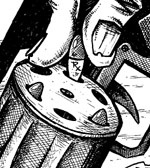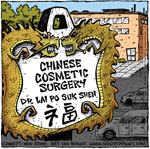Everything You Wanted to Know About Turmeric "Milk" But Didn't Know to Ask
| Share on Facebook | Share on Twitter | Share on Google+ |
One of the wonderful things about the English language is that it is so flexible that you don't have to be a native speaker to use it proficiently. One of the puzzling things about the English language is that turns of phrase that seem like they should make perfectly good English to people who don't use it every day sometimes baffle native speakers.
I'm a native speaker of English, and I was baffled when I got the request to write an article about "turmeric milk." Then I realized that apparently lots of people know about the health benefits of coconut milk and about the health benefits of turmeric, so apparently lots of people were doing Internet searches for "turmeric milk."
Actually, it's more precise to refer to "turmeric juice." The term "milk" is usually reserved for liquids pressed out of plants that are viscous and white, like coconut milk, or the "milk" that you can press out of milkweeds. Turmeric juice is a thin, clear, yellow-orange liquid that can stain clothes and counters. Like turmeric paste, turmeric juice is a traditional remedy in Ayurveda and Unani medicine, the folk medicine encouraged by the Muslim rulers of India. Turmeric also is used in folk medicine in Iran, Iraq, and Turkey.
Turmeric for Treating Skin Conditions
One of the most ancient applications of fresh turmeric juices and fresh turmeric pastes was treating women's skin problems. Turmeric was (and still is) used as a depilatory to remove unwanted hair, and it is used as an ointment to treat acne, especially acne in women that is worst around menstruation or during pregnancy.
Turmeric removes hair by increasing inflammation. Turmeric relieves acne by decreasing inflammation. If the two actions seem contradictory, the thing to understand is that the therapeutic difference is all about viscosity. A thick paste made of fresh turmeric encourages changes in the hair shaft that make the hair fall out. A lighter "juice" drained off the top of the paste is better for treating acne.
Turmeric as a Beauty Treatment
Turmeric is used in "facials" to prepare brides for wedding ceremonies in Bangladesh, India, and Pakistan. It lightens the skin, helps to exfoliate, and it helps heal sun damage. In Europe, sun screens sometimes include turmeric as a bronzer and toner. In the European Union, it will be labed as "E100" rather than by its botanical name.
If you have easy access to fresh turmeric roots, just wash a cup (150 grams or so) of turmeric and toss into your juicer or blender to make your own poultice or skin treatment. Two parts of turmeric and one part honey is even better for treating acne, because of the antibacterial action of the honey.
Turmeric Instead of Chicken Soup
In the United States and northern Europe, chicken soup is a traditional remedy for a cold. Scientists at the University of Nebraska even confirmed that the process of boiling a chicken with onions, garlic, and herbs creates unique chemical compounds that regulate white blood cells in the lungs, throat, nose, ears, and sinuses.
Turmeric has a similar effect on the same white blood cells, although it's traditionally used in stir-fries with onions and garlic or as a coloring for rice. The turmeric for "fry ups" of onions and vegetables or in steamed rice offers the same benefits as the chicken soup used in European and American homes or the miso with scallions used to treat colds in China, Korea, and Japan. The difference between turmeric and the other colds cures is that turmeric works even if you don't cook it with other ingredients. A few drops of turmeric juice or rub of turmeric paste (be sure not to stain clothes or rub the turmeric on broken skin) will also stop cough, open up the sinuses, and relieve sore throat.
Is It Practical to Use Turmeric "Milk?"
Should you start juicing turmeric for health and beauty? If you happen to live in a tropical region where you can grow your own turmeric, or if you have access to a market where fresh turmeric root is sold, by all means try turmeric facials and turmeric poultices made with turmeric juice and turmeric paste. But if you only have ready access to dried turmeric, use this healthy spice in the form of curry powder or curry tea instead.
-
Skin CareMen Skin Care
-
Free ResourcesFree eBooks
-
Every patient carries her or his own doctor inside.Albert Schweitzer
-
Featured Health SupplementTotal Balance is like no other
 … in that it utilizes state of the art delivery systems not generally used in a supplement...
… in that it utilizes state of the art delivery systems not generally used in a supplement...
-



















